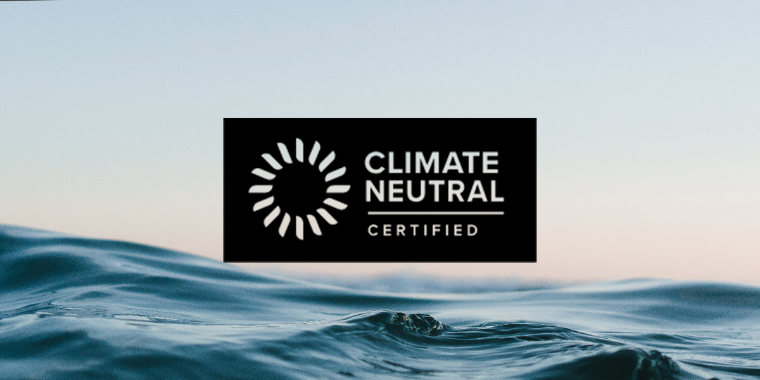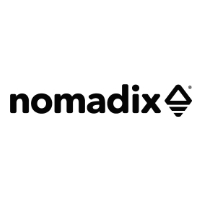Estimated to be worth $887 billion dollars, the outdoor industry has a serious financial stake in the fight against climate change. So how can outdoor brands play their part in reducing their carbon footprint?
At The Change Climate Project, a non profit that assists 300+ brands in voluntary decarbonization, outdoor gear companies like Peak Design (every carry solutions), Klean Kanteen (reusable food / drink storage) and Nomadix (beach towels) have been working to live up to their climate neutral certified standards and reduce their emissions over the years.
However, the journey to reaching net-zero emission goals is not always a simple one and requires patience and perseverance to tackle each source of emissions. By carefully measuring their footprint, working closely with suppliers, and cooperatively strategizing with their teams, these brands are showing us how it’s done.

Overcoming the struggles to do better
Since becoming Climate Neutral certified, Peak Design, Klean Kanteen, and Nomadix have overcome the following hurdles to make progress on their reduction goals:

Peak Design
GOAL: To increase recycled aluminum in production lines
Hurdles
Peak Design started by measuring their carbon footprint and realizing that aluminum made up a whopping 40% of their annual emissions (the next largest emissions category accounted for 17%). The most obvious solution was to incorporate recycled aluminum, but they quickly found that typical post-consumer recycled aluminum didn’t meet their product quality standards, and quality recycled aluminum was in short supply.
Outcome
The company hired a consultant and formed a working group to identify a solution to their aluminum issue. Now, they’re successfully working with post industrial recycled aluminum to offer 100% recycled aluminum in new launches. However, emission reductions is a work in progress: they’re working with a cohort of other outdoor brands to identify and create demand for aluminum options that have a lower environmental impact.

Klean Kanteen
GOAL: To improve supplier relationships to leverage better processes
Hurdles
Klean Kanteen’s measurement process showed 99.9% of their carbon footprint as coming from Scope 3 (indirect) emissions – materials, manufacturing and transportation. As a smaller customer of their suppliers, Klean Kanteen had to get creative to solve their upstream footprint, as they had little leverage to ask manufacturers to make system-wide overhauls.
In order to make reductions happen, Klean Kanteen was intentional about getting their full team on board: they aligned on a unified strategy across their full supply chain, and communicated climate concerns with their suppliers. They provided resources and examples that the suppliers could look to for support – and eventually they saw results. After years of communicating their desire for recycled material, their supplier came to them out of the blue with an option to transition to 90% PCR stainless steel. The switch from conventional to PCR stainless steel allowed them to cut their emissions from materials in half.
Outcome
With the hopes of meeting their goal to use 100% renewable energy by 2050, the team continues to collaborate with their partners to find cleaner alternatives, like solar, to reduce emissions on the manufacturing side. As of 2022, Klean Kanteen has achieved 36% emissions reductions (per unit) from their baseline. But this effort has taken (and will continue to take) a village of energized companies to push for larger, systematic changes.

Nomadix
GOAL: To reduce emissions
Hurdles
After first measuring their carbon emissions with Climate Neutral in 2022, Nomadix began peeling back the layers of their business and digging deeper into emissions reductions. As a company with only 20 employees, they had ideas of how they wanted to reduce their impact, but they were limited on bandwidth to tackle them in an organized and measurable way.
Outcome
In order to prioritize emission reductions, they brought on a full-time team member dedicated to impact and sustainability. The new Director of Sustainability drove initiatives to reduce the weight of shipping cartons and transition them to FSC-Certified materials, helped push the company to transition from air to sea freighting to cut emissions, and switched electricity at their headquarters to renewables. Efforts that were previously unorganized now had a singular point of contact – and an advocate – within the company. This new approach to having a single person responsible for managing reduction initiatives from start to finish was key in allowing Nomadix to see results show up in their emissions. Nomadix was able to achieve 80% emissions reductions between 2021 and 2022.
Conclusions
This case study of three brands in the outdoors industry showed us that companies small and large alike face similar challenges in emission reductions. However, it requires cooperative effort both within and among brands to make systematic changes that suppliers and manufacturers will respond to.
Furthermore, by creating demand for carbon neutral supply chains and products, brands in the outdoor industry influence other companies to voluntarily adopt decarbonization practices in order to stay competitive. Out of necessity to protect the planet, people, and places that all outdoor companies rely on for their businesses, brands must follow in the lead of Peak Design, Klean Kanteen, and Nomadix.
The post The Complex Road to Net Zero: Brand Success Stories appeared first on Cool of the Wild.


